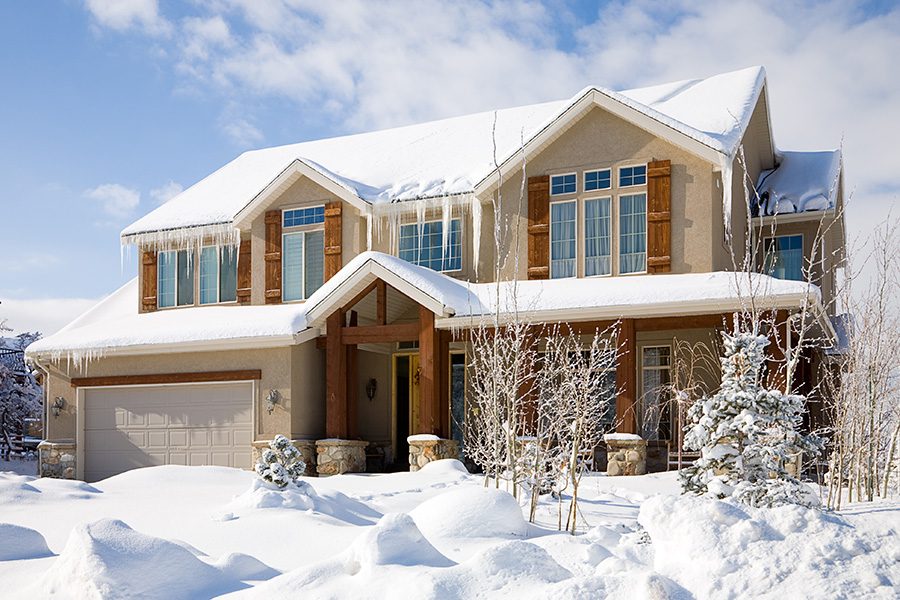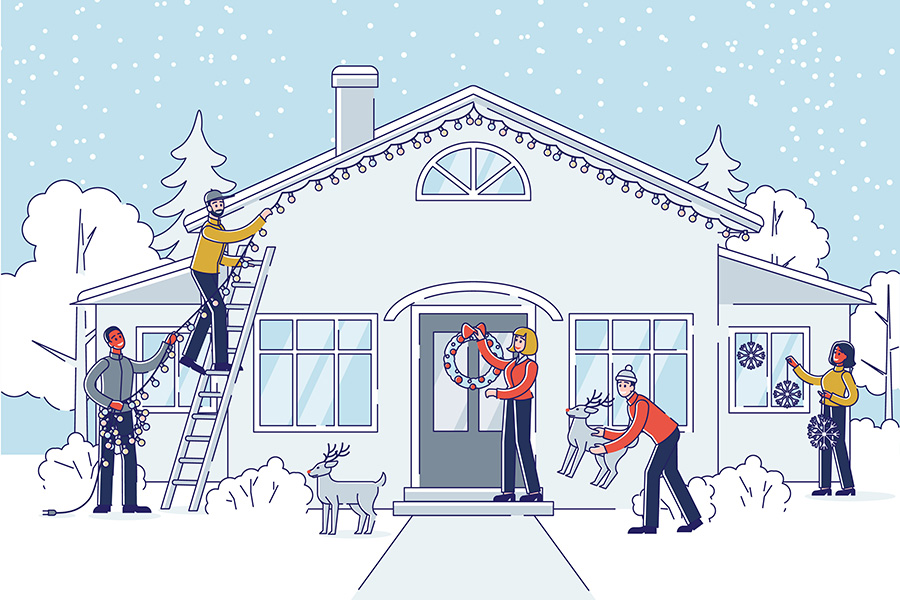What You Should Know About Ice Dams

They may be picturesque, but icicles hanging from your roof could be a sign of an ice dam.
If you’re not familiar with ice dams, these frozen ridges at the edge of your roof can cause serious problems, costing you serious money. The good news is you can help avoid this winter disaster by taking some preventive measures. Here’s what you should know:
What is an ice dam?
Ice dams form when heat inside the house enters the attic and melts snow on the roof. The melted snow drips down your roof and re-freezes when it reaches the colder eaves (the part of the roof that overhangs the wall). This ice accumulation is called an ice dam.
As more melted snow travels down the roof, it begins to re-freeze sooner, pushing its way under the shingles. The water then finds holes in the roof decking—between sheets of plywood or around nails—and begins to drip into your attic.
What damage does an ice dam cause?
A lot, actually. Water can peel paint, warp floors, and damage your ceilings and walls. Soggy insulation in your attic can cause mold and mildew to form. And ice dams can tear off gutters and loosen shingles, too.
How do you prevent ice dams?
The key to ice dam prevention is to keep your roof the same temperature as your eaves. There are several ways to accomplish this before snow begins accumulating:
- Increase attic ventilation to help ensure a consistent temperature. Soffit, gable and ridge vents allow outside air to circulate through your attic to remove moisture and maintain temperature. If your home doesn’t have these, talk to a professional roofer about installing them.
- Examine your insulation. Across your entire attic, make sure it’s not blocking the soffit vents and check its depth—find information here from the U.S. Department of Energy about how much insulation you need. Also keep in mind that insulation levels may look good in some areas, but corners and edges may be thin. If you need help, talk to a professional insulator.
- Prevent heat from escaping into your attic. This includes making sure all attic ducts are sealed and properly insulated. Also ensure that exhaust fans from the clothes dryer, kitchen and bathroom lead outdoors—not into the attic. And be sure to properly insulate any recessed can lights in rooms directly below the attic.
- Consult a professional. If your attic is a living space, it will be heated and more prone to causing ice dams. In this case, you’ll need to talk to a professional about ice dam prevention.
What do you do when an ice dam forms?
This is not a do-it-yourself project. It’s a dangerous task to remove the ice—if not done properly, you risk causing more damage to your home (and injuring yourself). Instead, hire a professional contractor with experience in removing ice dams to ensure it’s done properly and safely.







